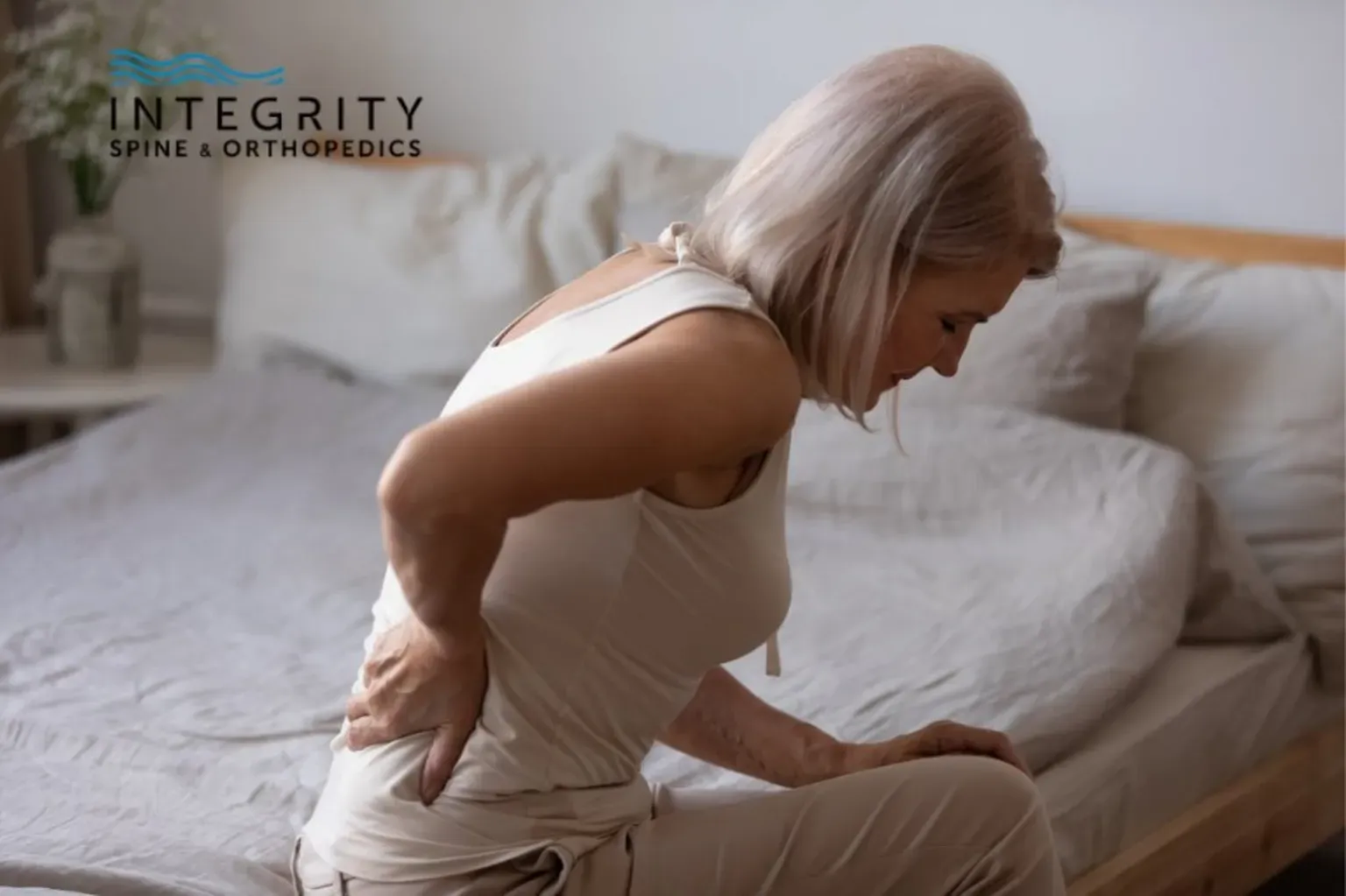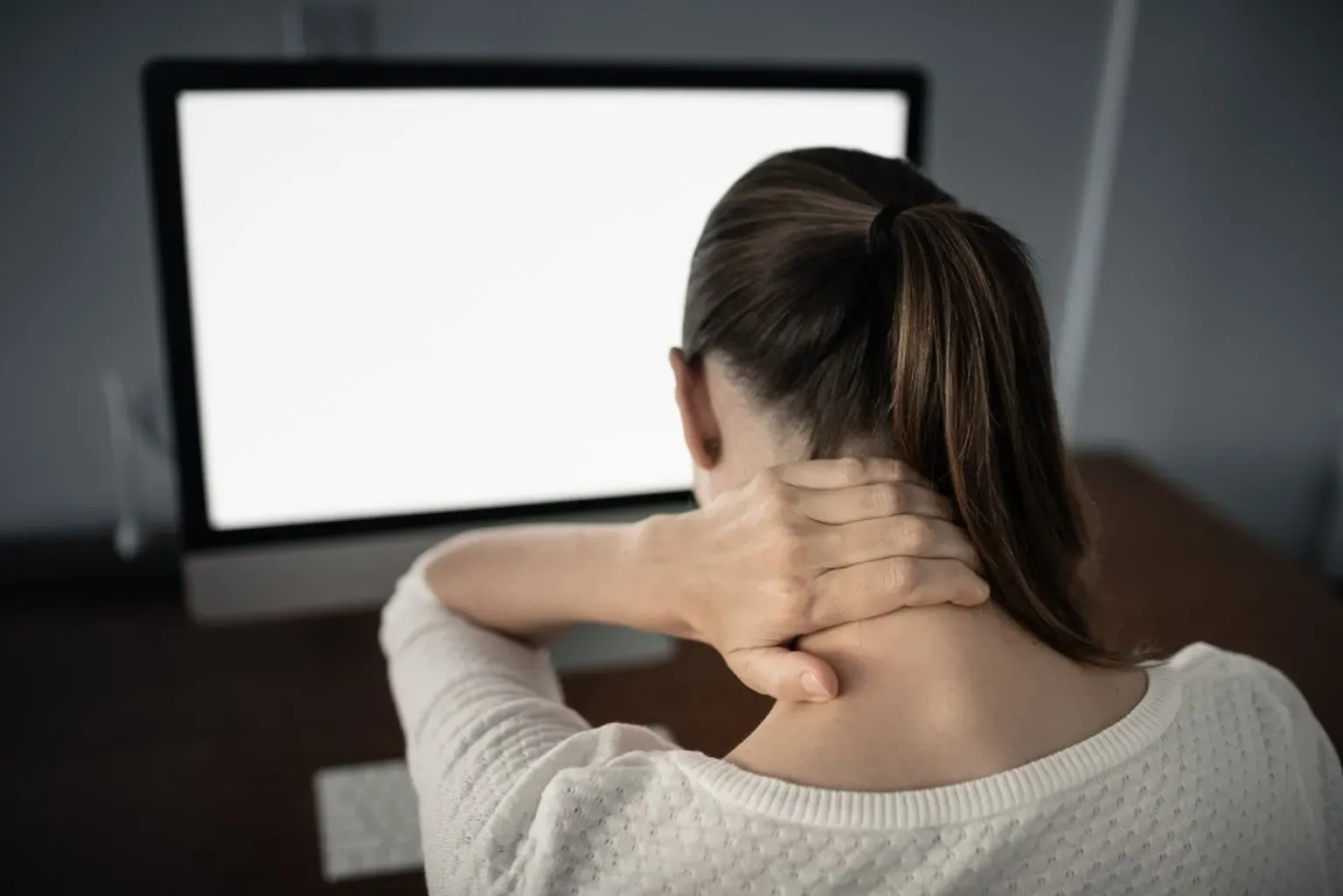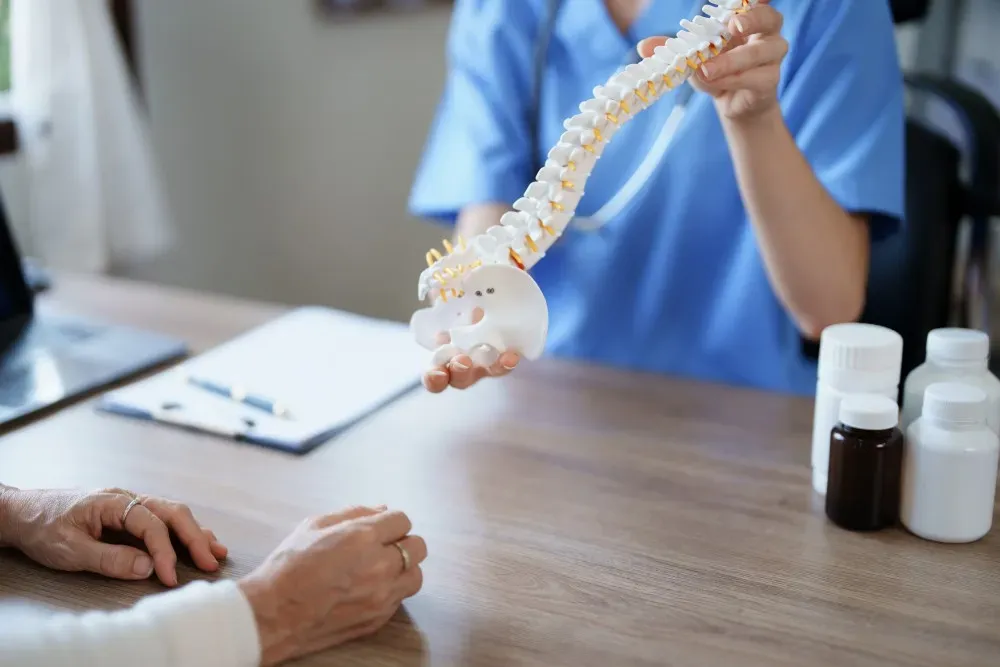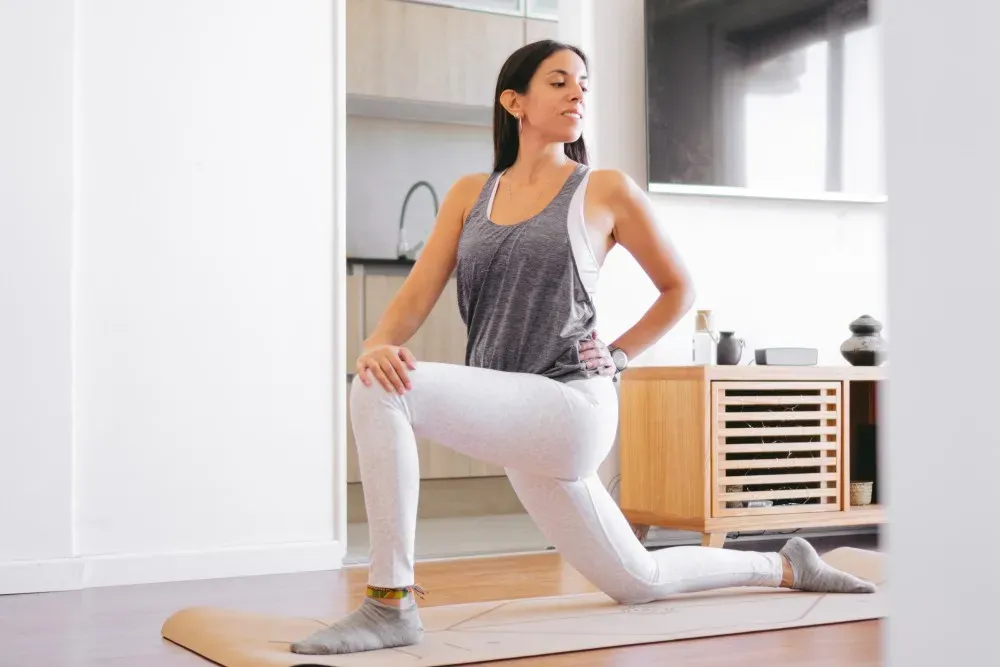Neurosurgery & Orthopedic Surgeons in Jacksonville

What is a Collapsed Disc?
,h2>What is a collapsed Disc? Spinal discs sit between the 33 vertebrae of the spine. They cushion the vertebrae, absorb shock and pressure, and aid in spinal flexibility and mobility.
What is a collapsed Disc? Spinal discs sit between the 33 vertebrae of the spine. They cushion the vertebrae, absorb shock and pressure, and aid in spinal flexibility and mobility. Intervertebral discs are made of a tough outer layer of cartilage surrounding a soft, jelly-like inner layer.
As we age, our spinal discs age with us. They become drier, stiffer and less flexible over time, which makes them more vulnerable to injury and damage. This natural wear and tear can cause discs to tear or slip out of place. Spinal degeneration can also cause a disc to collapse, or lose height. A collapsed disc destabilizes the spine and hinders the discs’ ability to protect vertebrae.
Collapsed discs occur most frequently in the cervical and lumbar spine. The vertebrae in these areas bear more body weight and have a wide range of motion, which makes them more prone to injury or damage.
Spinal discs deterioration is natural with age and normal wear and tear on the spine. The majority of adults experience spinal degeneration, although mild cases may not cause pain or impact daily activities. However, collapsed discs can lead to chronic back pain and disability for some people.
CAUSES AND RISK FACTORS
The most common cause of a collapsed disc is degenerative spinal conditions. Less commonly, traumatic injuries lead to disc collapse.
- Degenerative conditions
- Spinal osteoarthritis. Osteoarthritis develops when the cartilage that cushions the ends of joints wears away, causing pain, inflammation and loss of movement. Weakness and degeneration in and around the spinal joints can affect other spinal structures and cause intervertebral disc collapse.
- Herniated disc. Disc herniation occurs when the outer layer of cartilage tears and fluid from the inner layer leaks into the spinal column. Tears and damage to the cartilage can also cause the disc to collapse or break into several pieces.
- Degenerative disc disease (DDD). Degenerative disc disease is a condition that describes degenerative changes in the spine due to aging, wear and tear. These changes cause pain, spinal instability, disc collapse, nerve compression and other symptoms.
- Traumatic injury from a fall, car accident or sports injury
- Repetitive movement injury from a physically demanding job or high-impact activity like running
- Obesity
SYMPTOMS
Symptoms occur when a collapsed disc compresses nearby nerve roots in the spinal column and can also develop when the spinal disc loses enough height that 2 vertebrae rub against each other. The resulting friction causes pain, irritation and inflammation.
If you have a compressed nerve due to disc damage, you may experience:
- Lumbar spine
- Low back pain
- Pain that radiates down the buttocks, thighs, legs and feet
- Weakness, numbness or tingling in the back, legs and feet
- Reduced movement in the back
- Cervical spine
- Neck pain
- Pain that radiates down the shoulders, arms, hands and fingers
- Weakness, numbness or tingling in the arms, hands and fingers
- Reduced range of motion in the neck
In severe cases, nerve compression from a collapsed disc can cause changes in bowel and bladder control.
Activities like sitting, bending, twisting and lifting can make pain worse, because the spine bears more weight during these movements. While walking and lying down can help relieve pain and pressure.
DIAGNOSIS AND TREATMENT
See a doctor if you’re experiencing any of the symptoms listed above. To make a diagnosis, your doctor will take a physical exam to test your muscle strength and range of motion and a medical exam to identify your symptoms and medical history. While he or she will order imaging tests like an MRI or CT scan to visualize the spine and rule out other causes of pain, like a herniated disc, spinal arthritis or a tumor. If you have a collapsed disc, imaging tests will confirm the diagnosis and reveal where the injured disc is compressing nerve roots.
Disc collapse isn’t reversible. However, conservative treatment can help reduce symptoms and restore mobility. Your doctor may recommend the following options:
1.) Medications. Over-the-counter pain medications like NSAIDs can help relieve pain and inflammation. If you’re experiencing moderate to severe pain, your doctor may prescribe stronger pain medications, opioids or a short-term course of oral steroids. He or she may also prescribe muscle relaxants for pain and muscle spasms.
2.) Cortisone injections. Cortisone injections directly into the spine can help relieve pain, inflammation and irritation.
3.) Physical therapy. Physical therapy exercises can help strengthen the muscles that support the spine and improve flexibility, balance, range of motion and endurance. Exercises that strengthen the core and low back muscles are especially important, because these muscles support the spine and take pressure off your back.
4.) Surgery. Surgery is an option if conservative treatments aren’t effective for pain relief, symptoms are impairing your mobility or you experience a change in bowel and bladder function. A minimally invasive procedure to remove or repair the collapsed disc can resolve pain in the long-term.
PREVENTATIVE MEASURES
Spinal disc degeneration and collapse is a natural part of aging and not preventable. However, there are steps you can take at home to keep your spine healthy, reduce the risk of back injury and minimize pain.
1.) Exercise and stretch. Exercise regularly and work on strengthening your core and back muscles to protect the spine and maintain alignment. Low-impact activities that improve strength without placing more pressure on the spine include walking, biking, water aerobics and yoga.
2.) Lose excess weight. Excess weight places more pressure on the spine, which can lead to disc compression and collapse. Exercise regularly and eat a balanced, whole-foods diet to achieve a stable weight.
3.) Practice good body positioning. Practice proper posture and good body positioning while standing, sitting, sleeping, bending and lifting. Correct body positioning keeps your spine in alignment and reduces pressure on your back muscles. When you’re lifting heavy loads, lift with your leg muscles instead of your back. Wear properly fitting shoes with good arch and heel supports.
4.) Be mindful of repetitive movements. Be aware of the occupations, hobbies and exercises requiring repetitive movements that place a lot of stress on the spine and back muscles. If you have a physically demanding job, practice good technique while bending and lifting, and take breaks often. If you engage in high-impact sports like running, mix in low-impact exercises that strengthen your back and core to protect your spine.
INTEGRITY SPINE AND ORTHOPEDICS TREATS SPINAL CONDITIONS
Degenerative changes in the spine can cause chronic back pain, loss of mobility and other disabilities that hinder your quality of life. At Integrity Spine and Orthopedics, we offer a range of treatments to relieve pain for acute and chronic back, spine and joint conditions. Our board-certified doctors specialize in orthopedic care, pain management and minimally invasive spinal surgeries.
Let’s get you back to doing the activities you love. Call us at 904-456-0017 or fill out an online contact form to schedule an appointment. We also offer free MRI reviews to qualified patients.




